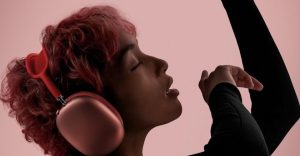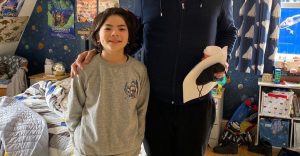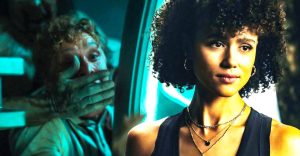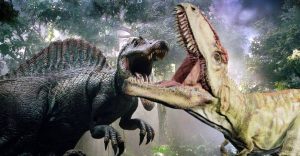10 Things You Never Knew About The Making Of Poltergeist (1982)

Poltergeist is one of the most celebrated horror movies of all time. Directed by Tobe Hooper under the producorial supervision of Steven Spielberg, not only did it strike a chord among critics, but the film also became the highest-grossing horror flick of 1982 and the eighth biggest moneymaking movie of the year.
Of course, fervid fans are fully aware of the so-called Poltergeist curse, named for the series of mysterious deaths involving various cast members after their movies were released. But what about on set in the present? A lot of crazy stuff went down during production as well. For a better idea, here are 10 things you never knew about the making of Poltergeist!
10 Drew Barrymore/Stephen King

In the development phase of Poltergeist, Drew Barrymore was heavily considered for the role of Carol Anne. Steven Spielberg ultimately opted for someone more “angelic” and cast Heather O’Rourke instead. However, it was Barrymore’s audition that led to her casting in E.T., which Spielberg made back-to-back with Poltergeist.
Additionally, Stephen King was approached to write the screenplay for the film. Negotiations ultimately fizzled, but, oddly enough, Barrymore would star in King’s Firestarter two years later.
9 Tangina

One of the most memorable characters in Poltergeist is Tangina, the diminutive medium played by Zelda Rubenstein. But how many of you knew that Rubenstein was a real-life psychic, as well?
After auditioning for the role four times, Rubenstein filmed her iconic part in just six days. Her status as a real medium helped land her the role, as she claimed to have visions of events before they occurred. Rubenstein also claimed she could sense that Tobe Hooper was on drugs with his focus far away.
8 Rotating Box

Some pretty nifty filmmaking techniques were employed on the set of Poltergeist, including one bedroom set-piece which allowed the filmmakers to rotate the set for optimal effect.
Roughly 100 minutes into the film, as Caroline is being marauded by an invisible entity, the scene was filmed inside a rotating box by using a stationary camera. The practical optical effect makes it appear as if Caroline is being slid up the wall and dragged across the ceiling.
7 Killer Clown

One of the most indelible images in Poltergeist is the oversized, creepy clown-doll haunting Robbie’s bedroom. But, how many of you were aware of the onset mishap that nearly injured Robbie for real?
During the climax of the film, Robbie becomes strangled by the animated clown-doll. However, the arms on the prop-doll gripped Oliver Robbins’ (Robbie) neck so tight that he began screaming out “I can’t breathe.” Spielberg initially thought Oliver was improvising until he saw the boy’s face turning purple. Spielberg sprinted over and yanked the doll away from him.
6 Crawling Steak

Remember the creepy-crawly steak in Poltergeist that somehow slides across the kitchen countertop? Have you any idea how that was done?
The shot was achieved by using a real piece of steak which was placed over a slit in the tile-counter below. A pair of wires were connected to the meat while an effects operator hid under the counter and simply puppeteered the steak to glide like an insect across the surface. A similar technique was used when Diane shows Steven the moving chair.
5 Moving Chairs

Speaking of moving chairs, it’s quite impressive to know that the shot of the perfectly balanced pyramid of chairs that startles Diane in the kitchen was done in one single take. Seriously!
Pay attention to the camera movement. As the lens pans over with Diane gathering cleansers, several crew members rushed into the kitchen off-screen and quickly swapped the single chairs with an already-erected chair-pyramid. When the camera pans back seven seconds later, Diane is utterly startled at the sight.
4 Real Skeletons

During the climactic swimming pool scene in which it is revealed the accursed Freeling house is built upon an ancient burial ground, real skeletons were used on the set! Some people believe this is the reason for the so-called “Poltergeist curse” in the first place.
What’s more, JoBeth Williams (Diane) had no idea real skeletons were used in the scene until well after production wrapped. Williams was already hesitant about shooting in a swimming pool given all the electrical equipment nearby, prompting Spielberg to hop in the pool while filming and declare “now if a light falls in, we’ll both fry!”
3 MGM Roar

From Jaws and beyond, most of Spielberg’s movies were made by Universal. However, Poltergeist was made by MGM. If you pay close attention to the final act, you can hear the famous MGM lion roar during one mortifying jump scare!
At roughly 100 minutes into the film, the sound effect used as the malefic ghost attacks the house comes from the same source as the modern-day MGM lion roar. Even sneakier, during the scene when the flesh is ripped off the face of the investigator looking in the mirror, the hands in the shot are none other than Spielberg’s!
2 Model House

When it came time to film the finale, in which the Freeling house gets subsumed into a black hole, a four-foot-wide model was used that took weeks to build.
With the camera placed directly above the house and hundreds of wires connecting to the structure, a giant vacuum generator was then turned to simulate high wind-force. Several FX crewmen also fanned the structure with pump-action shotguns to create the illusion of a black hole. The shot only lasted two seconds or so, which they production team executed on the first take.
1 Spielberg’s Involvement

A great debate has raged over the years regarding Spielberg’s directorial involvement with Poltergeist. At first, Tobe Hooper was offered to direct E.T., but he turned it down in favor of the unwritten script for this film instead. Spielberg opted to helm E.T. himself but remained onboard Poltergeist as producer and writer.
In the years since its release, Spielberg has graciously credited Hooper for directing the film, but those close to production claim Spielberg oversaw the making as a shadow director. Producer Frank Marshall and actress Zelda Rubenstein claim Spielberg directed much of the film, with Hooper assisting with shot-setup.

















